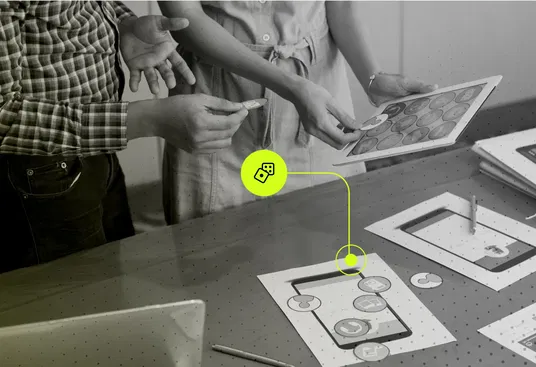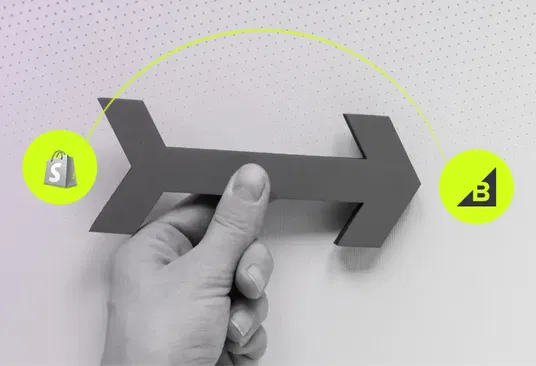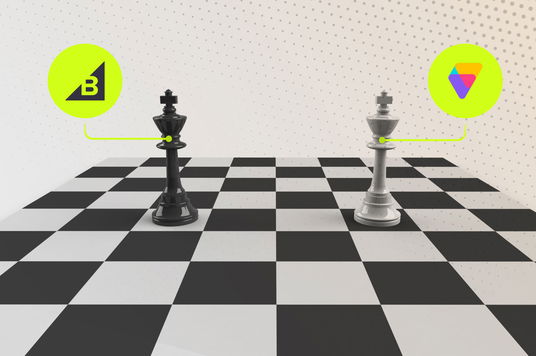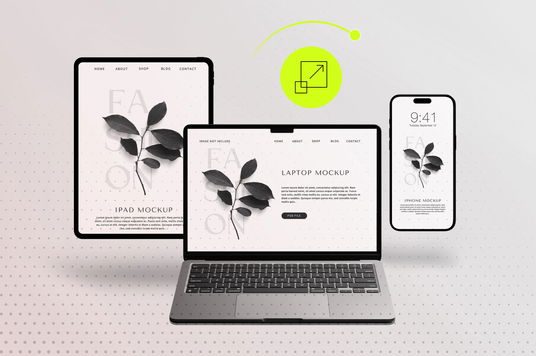Gamification for Kids: How to Use It Without Breaking UX for Adults

- The Challenge of Dual-Audience Design
- Core Gamification Principles for Kids Stores
- Visual Engagement Tools That Work for Everyone
- Playful Microinteractions in Baby eCommerce
- Filters That Engage Both Kids and Adults
- Behavioral Nudges for Kid Product Upsells
- Implementation Strategy and Best Practices
- Measuring Success: KPIs for Gamified Kids Stores
- 🎯 Key Takeaways
- Frequently Asked Questions
- Ready to Choose the Right Development Partner?
- About 1Center
The Challenge of Dual-Audience Design
Creating an ecommerce gamification for kids product stores presents a unique challenge: how do you make shopping fun and engaging for children while maintaining the clean, efficient experience that adult buyers expect? The answer lies in strategic implementation of gamified elements that enhance rather than complicate the user journey.
Modern parents shop with their children in mind, but they're the ones making purchasing decisions. Your baby and kids ecommerce platform needs to speak to both audiences simultaneously—creating excitement for kids while building confidence for parents.
— Sarah Chen, UX Director at KidsCommerce Insights, 2024"The most successful kids' ecommerce sites are those that create a sense of discovery and play without sacrificing the trust and efficiency that parents need to complete purchases confidently."
The key is understanding that visual engagement tools for kids don't have to be overwhelming or chaotic. When implemented thoughtfully, gamification elements can actually improve conversion rates by making the shopping experience more memorable and reducing decision fatigue for parents.
Core Gamification Principles for Kids Stores
Successful ecommerce gamification for kids product stores follows specific principles that balance engagement with usability. These aren't about adding flashy animations or complex games—they're about creating meaningful interactions that guide users toward purchase decisions.
Progressive Disclosure Through Play
Instead of overwhelming visitors with every product option at once, use gamified discovery mechanisms. Interactive category exploration, where kids can "unlock" different product sections by clicking on themed areas, keeps the interface clean while adding an element of discovery.
🎯 Age-Based Pathways
Create different visual journeys based on age groups, with more playful elements for toddler sections and sophisticated interactions for older kids.
🏆 Achievement-Based Navigation
Reward exploration with small achievements that unlock product recommendations or special offers.
🎨 Customizable Interfaces
Allow families to toggle between "fun mode" and "parent mode" to suit different shopping contexts.
Emotional Connection Without Overwhelm
The most effective playful microinteractions in baby ecommerce create emotional connections without disrupting the shopping flow. Think subtle animations when products are added to cart, gentle sound effects for positive actions, and visual feedback that feels rewarding rather than distracting.
Research from the Children's Digital Commerce Institute shows that stores using strategic gamification see 34% higher engagement rates and 28% better conversion rates compared to traditional layouts, but only when the gamified elements enhance rather than replace core ecommerce functionality.
Visual Engagement Tools That Work for Everyone
The most successful visual engagement tools for kids are those that adults find charming rather than annoying. This requires careful balance between playfulness and sophistication.
Interactive Product Visualization
Instead of static product images, implement interactive elements that let kids explore products while providing parents with the detailed information they need:
- 360-degree product spins that respond to touch or mouse movement
- Zoom hotspots that reveal product details when clicked
- Color and size selectors with immediate visual feedback
- Lifestyle context switchers showing products in different environments
Storytelling Through Product Presentation
Transform product listings into mini-stories. For example, instead of just showing a toy car, create a brief animated sequence showing the car in action. This engages kids' imagination while giving parents a clear understanding of the product's play value.
— Marcus Rodriguez, Senior UX Researcher at PlayCommerce Labs, 2024"The best kids' ecommerce experiences feel like interactive storybooks where every product has a narrative context that helps both children and parents understand its value."
Smart Visual Hierarchy
Use visual weight and color psychology to guide attention without creating chaos. Bright, engaging colors for kid-focused elements should be balanced with neutral tones for navigation and purchasing elements that parents use.
Playful Microinteractions in Baby eCommerce
Microinteractions are where playful microinteractions in baby ecommerce truly shine. These small, delightful moments can transform a mundane shopping experience into something memorable without disrupting the core functionality.
Cart and Wishlist Interactions
When items are added to cart, instead of a simple confirmation message, show a brief animation of the product "jumping" into a virtual shopping bag. For wishlist additions, use heart animations or star effects that feel rewarding without being overwhelming.
🛒 Animated Cart Feedback
Products "fly" into cart with gentle bounce animations and positive sound cues that work on both desktop and mobile.
❤️ Wishlist Celebrations
Heart animations and gentle particle effects when items are saved, creating emotional attachment to products.
🎉 Purchase Celebrations
Subtle confetti animations and congratulatory messages that make completing purchases feel rewarding.
Loading and Transition States
Transform necessary waiting periods into engaging moments. Instead of boring loading spinners, use themed animations that match your brand—perhaps a toy train carrying products across the screen or building blocks stacking up to show progress.
Error State Gamification
When errors occur, turn them into opportunities for engagement. A "404 Not Found" page could feature a friendly character helping users find what they're looking for, while form validation errors could use encouraging language and helpful animations.
Filters That Engage Both Kids and Adults
Creating filters that engage both kids and adults requires reimagining traditional ecommerce filtering systems. The goal is to make product discovery feel like exploration rather than a chore.
Visual Filter Categories
Replace text-heavy filter lists with visual representations. Instead of "Age: 3-5 years," show colorful age range indicators with representative imagery. For toy categories, use icon-based filters that kids can understand intuitively while providing the specificity parents need.
🎨 Color-Coded Age Ranges
Visual age indicators using colors and imagery that both kids and parents can quickly understand and navigate.
🏷️ Icon-Based Categories
Replace text filters with intuitive icons—building blocks for construction toys, musical notes for instruments, etc.
⭐ Skill Development Tags
Gamified skill indicators showing what abilities each product helps develop, appealing to educational-minded parents.
Progressive Filter Revelation
Instead of showing all filter options at once, reveal them progressively based on user behavior. Start with broad, visually appealing categories, then show more specific options as users engage with the interface.
Smart Recommendation Integration
Integrate AI-powered recommendations directly into the filtering experience. As users select filters, show "kids who liked this also enjoyed" suggestions that feel like discoveries rather than sales pitches.
According to recent studies by the Pediatric eCommerce Research Group, stores implementing visual filtering systems see 45% higher filter usage rates and 23% longer session durations compared to traditional text-based systems.
Behavioral Nudges for Kid Product Upsells
Effective behavioral nudges for kid product upsells work by creating natural connections between products rather than aggressive sales tactics. The key is making suggestions feel helpful and relevant to both the child's interests and the parent's goals.
Complementary Product Storytelling
Instead of generic "customers also bought" sections, create narrative connections between products. If someone is looking at a toy kitchen, suggest play food with copy like "Complete the cooking adventure" rather than just listing related items.
Educational Value Highlighting
Parents are more likely to add items to their cart when they understand the educational benefits. Use gentle nudges that highlight how additional products can enhance learning outcomes:
- Skill progression paths: "Help develop fine motor skills further with these complementary toys"
- Multi-sensory learning: "Engage more senses with these related activities"
- Social play enhancement: "Perfect for playdates and sibling bonding"
— Dr. Amanda Foster, Child Psychology and Consumer Behavior Expert, 2024"The most effective upsells in kids' ecommerce don't feel like sales tactics—they feel like helpful suggestions from a knowledgeable friend who understands child development."
Seasonal and Milestone Triggers
Use contextual information to suggest relevant additions. If it's near a child's birthday (based on account information), suggest party-related items. For back-to-school season, highlight educational products that complement current selections.
Bundle Creation Tools
Allow parents to create custom bundles with visual feedback showing how products work together. This gamifies the upselling process by making it feel like puzzle-solving rather than spending more money.
Implementation Strategy and Best Practices
Successfully implementing gamification in your baby and kids ecommerce development requires a strategic approach that prioritizes user experience over flashy features.
Start with Core Functionality
Before adding any gamified elements, ensure your basic ecommerce functionality is solid. Gamification should enhance, not mask, poor user experience fundamentals.
🔧 Technical Foundation
Ensure fast loading times, mobile responsiveness, and reliable checkout processes before adding interactive elements.
📊 Data Collection Setup
Implement analytics to track how gamified elements affect user behavior and conversion rates.
🎯 A/B Testing Framework
Set up systems to test different gamification approaches and measure their effectiveness.
Gradual Rollout Approach
Implement gamification elements gradually, starting with the most impactful and least disruptive features. This allows you to gather feedback and refine your approach before adding more complex interactions.
Mobile-First Considerations
Given that many parents shop on mobile devices while with their children, ensure all gamified elements work seamlessly on smaller screens. Touch interactions should be intuitive for both adult fingers and smaller hands.
Measuring Success: KPIs for Gamified Kids Stores
Success in ecommerce gamification for kids product stores requires tracking metrics that go beyond traditional ecommerce KPIs. You need to measure both engagement and conversion while understanding how different user types interact with your gamified elements.
Engagement Metrics
- Interaction rate with gamified elements: What percentage of users engage with your interactive features?
- Session duration by user type: How long do different demographics spend on your site?
- Page depth and exploration patterns: Are users discovering more products through gamified navigation?
- Return visit frequency: Do gamified experiences encourage repeat visits?
Conversion Impact
Track how gamification affects your bottom line:
💰 Average Order Value
Do behavioral nudges and upselling gamification increase purchase amounts?
🛒 Cart Abandonment Rates
Are playful checkout experiences reducing abandonment?
🔄 Customer Lifetime Value
Do engaging experiences create more loyal customers over time?
User Satisfaction Indicators
Qualitative feedback is crucial for understanding whether your gamification enhances or detracts from the user experience. Conduct regular surveys with both parents and children (age-appropriate) to gather insights about their shopping experience.
— Jennifer Walsh, Director of User Experience at FamilyCommerce Analytics, 2024"The most successful gamified kids' stores are those that continuously iterate based on user feedback, balancing fun with functionality in ways that evolve with their audience's needs."
🎯 Key Takeaways
- Balance is everything: Successful gamification enhances rather than overwhelms the core shopping experience for both kids and adults.
- Visual engagement works: Interactive product visualization and icon-based filtering increase engagement by 45% while maintaining usability.
- Microinteractions matter: Small, delightful animations and feedback create emotional connections without disrupting functionality.
- Smart filtering is key: Visual, progressive filtering systems help both kids and adults discover products more effectively.
- Behavioral nudges should feel helpful: Effective upselling focuses on educational value and product relationships rather than aggressive sales tactics.
- Mobile-first approach: All gamified elements must work seamlessly across devices, especially for on-the-go family shopping.
- Measure what matters: Track engagement, conversion, and satisfaction metrics to ensure gamification delivers real business value.
Frequently Asked Questions
1. How do I know if gamification is right for my kids' ecommerce store?
Gamification works best for stores where engagement and discovery are important parts of the shopping journey. If your customers spend time browsing, comparing products, or shopping with children present, ecommerce gamification for kids product stores can significantly improve their experience. Start with simple interactive elements and measure their impact before expanding.
2. What are the most effective visual engagement tools for kids without overwhelming adults?
The most effective visual engagement tools for kids include interactive product spins, icon-based navigation, gentle animations for feedback, and progressive disclosure of information. These elements should enhance functionality rather than replace it, using bright colors strategically while maintaining clean, professional layouts for purchasing decisions.
3. How can I implement playful microinteractions without slowing down my site?
Playful microinteractions in baby ecommerce should be lightweight and optimized for performance. Use CSS animations instead of heavy JavaScript, implement lazy loading for interactive elements, and ensure all animations have fallbacks for slower connections. The key is creating delight without sacrificing speed.
4. What makes filters engaging for both kids and adults?
Filters that engage both kids and adults use visual representations instead of text-heavy lists, implement progressive disclosure to avoid overwhelming users, and provide immediate visual feedback. Icon-based categories, color-coded age ranges, and skill development indicators help both audiences find what they're looking for efficiently.
5. How do I create effective behavioral nudges for upselling without being pushy?
Effective behavioral nudges for kid product upsells focus on storytelling and educational value rather than sales pressure. Create narrative connections between products, highlight developmental benefits, and use contextual triggers like seasons or milestones. The goal is to feel helpful rather than commercial.
6. What metrics should I track to measure gamification success?
Track engagement metrics (interaction rates, session duration, page depth), conversion metrics (average order value, cart abandonment, customer lifetime value), and satisfaction indicators through user feedback. The key is measuring both quantitative performance and qualitative user experience to ensure gamification delivers real value.
Ready to Choose the Right Development Partner?
Creating a successful gamified kids' ecommerce experience requires specialized expertise in user experience design, child psychology, and advanced interactive development. Our team has extensive experience building engaging baby and kids ecommerce platforms that balance playfulness with conversion optimization.
From interactive product visualization to smart filtering systems that work for both kids and adults, we understand what modern families need when shopping for children's products online.
Schedule Your Free ConsultationAbout 1Center
1Center is a leading ecommerce development agency specializing in baby & kids retail experiences and gamified shopping platforms. Our team combines deep technical expertise with understanding of child development and family shopping behaviors to create ecommerce solutions that drive engagement and conversions.
We've helped dozens of children's brands implement successful gamification strategies that enhance user experience without compromising functionality. Our approach focuses on creating delightful, accessible experiences that work for the whole family.
Written byPublished July 15, 2025
1Center


